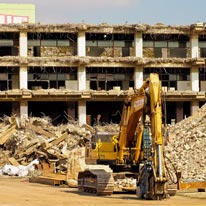Building recovery strategies after disasters and military conflicts based on experience and innovation

Disasters and military conflicts have devastating effects on buildings and infrastructure, often resulting in extensive damage and destruction. In such situations, rebuilding and recovery efforts become paramount, but they are not without their challenges.
Rebuilding after disasters and military conflicts requires careful planning and execution, as well as innovative approaches and technologies to ensure that the newly constructed buildings are resilient and can withstand future disasters. This article will explore the strategies for rebuilding buildings after disasters and military conflicts, drawing on the experience and innovations in this field.
Assessment and Planning
The first step in rebuilding after a disaster or military conflict is to assess the damage and plan for recovery. The assessment process should include a detailed analysis of the damage, including the extent and severity of the destruction, the structural integrity of the buildings, and the environmental conditions in the area. This information will help in determining the scope of the rebuilding effort and the resources needed.
The planning process should involve all stakeholders, including government agencies, NGOs and local communities. The stakeholders should work together to develop a comprehensive plan for rebuilding that takes into account the needs of the affected population, the availability of resources, and the environmental conditions. The plan should also include provisions for risk reduction and mitigation measures to prevent future disasters.
Innovative Technologies
Innovative technologies are critical in rebuilding after disasters and military conflicts. One such technology is Building Information Modelling (BIM), which is a process that involves creating a digital model of the building. BIM can help in the design and construction of buildings that are resilient and sustainable. BIM models can be used to simulate different scenarios and test the building's ability to withstand disasters.
Another innovative technology is the use of drones for post-disaster assessment and mapping. Drones can be used to assess the damage in hard-to-reach areas and provide accurate information for planning and recovery efforts. Drones can also be used for 3D mapping and modelling of the affected areas, providing a detailed view of the damage and the reconstruction needs.
Sustainable Rebuilding
Sustainability is an essential consideration in rebuilding after disasters and military conflicts. Sustainable rebuilding involves using materials and techniques that are environmentally friendly and energy-efficient. For example, using locally sourced materials can reduce the carbon footprint of the rebuilding effort and create local jobs. Building designs should also incorporate renewable energy sources, such as solar and wind power.
In addition to environmental sustainability, social sustainability is also critical. Rebuilding efforts should take into account the needs and preferences of the local population, and involve them in the planning and rebuilding process. This will help to create a sense of ownership and responsibility among the affected population, which can lead to a more sustainable and resilient community.
Capacity Building and Training
Capacity building and training are essential in rebuilding after disasters and military conflicts. Local communities and workers should be trained in the latest construction techniques and technologies, including BIM and sustainable building practices. Training programs should also include disaster preparedness and risk reduction measures, to ensure that the community is better equipped to face future disasters.
Conclusion
Rebuilding after a disaster or military conflict requires a strategic approach that incorporates assessment, planning, collaboration, innovative building techniques and materials, community participation and empowerment, and sustainability and resilience. By focusing on these strategies, we can ensure that the rebuilding process meets the needs of affected communities and promotes long-term economic development.

